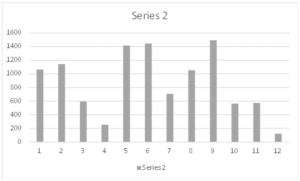It’s the beginning of the month, therefore it’s time to check for supplies at home and refill the stocks. Being a supply chain professional, I have implemented tools and processes at home for an inventory maintenance policy – with the exception of coffee, for which overstocking is always recommended.
While I was going through the process of restocking at my favorite ecommerce website, I noticed something different this time – a ‘Subscribe and Save’ option, which brought back memories from my childhood.
- While I was a kid, my family used to buy groceries from the nearby brick and mortar store, which had a decent supply chain network of five shops across the city plus an inventory warehouse. The owner (& family members) were the planners monitoring the network.
- Similar to every other supply chain, they too had the problem of overstocking, understocking, lost sales etc.
- Hence they came up with the subscription option: buy certain things each month and in return customers get 5-10% discount on the price.
Here is how they could have achieved it.
Demand Planning
Demand Planning is a key element of organizations supply chain and it drives their S&OP process. Subscribe and save options make these decisions easier.
- Consistent demand means less fluctuation in order volume, which leads to better accuracy of forecasts
- It’s easier to forecast values for Series 1 compared to Series 2
- Read more: Demand Variability
- There are also specific tools like Arkieva that leverage predictive analytics and artificial intelligence to help make these decisions even easier.
Supply Planning
It is important for businesses to consider what type of products they are including as part of the subscription model, as that will impact whether the inventory levels and/or SKU counts will shift up or down.
Since it is a fixed commitment to satisfy the subscription customers (or in other words with a customer service level of 100% for the stable demand), inventory can be easily predicted, and businesses can then decide on an efficient way of meeting the demand (i.e., ship from the most efficient and cost-effective warehouse/plant).
Read more: Inventory Management
Procurement
Because of the commitment to customers, it is imperative to make sure that the right products are sourced and kept at the right location. Shortage of product would result in a negative customer experience.
Based on the type of supply chain network, it could either be replenishment and distribution planning or production planning if the product is produced in house. Nevertheless, with less uncertainty in demand, supply planning is a little more predictable. Stable demand will help the planners make specialized contracts with the vendors or create an optimized production plan with less interventions.
Having established metrics for supply planning will help the business exploring opportunities for adding new subscription customers.
Logistics Costs
As customers add more products to their subscription, businesses can benefit by shipping products together. It will help them save a great deal on packaging and shipping costs. Therefore, strategically selecting which products to offer as a part of subscription is a key step for the business. As businesses collect more sales order data, they can perform some clustering analysis or other analytics to derive the strategies.
Customer Retention and Service
The subscribe and save option comes with its own risks: Subscription orders can be changed, amended or cancelled. Renewals are not guaranteed. Hence managers or decision makers must have an accurate assessment of the health of a subscription base. This will not only help businesses improve churn rates but also the data that feeds into planning process.
Having a seamless integration of the front end (POS data, online sales etc.) with backend analytics helps the organizations optimize their supply chain operations and save costs overall. Sharing the cost savings with customers helps to build a loyal customer base and retention of customers.







